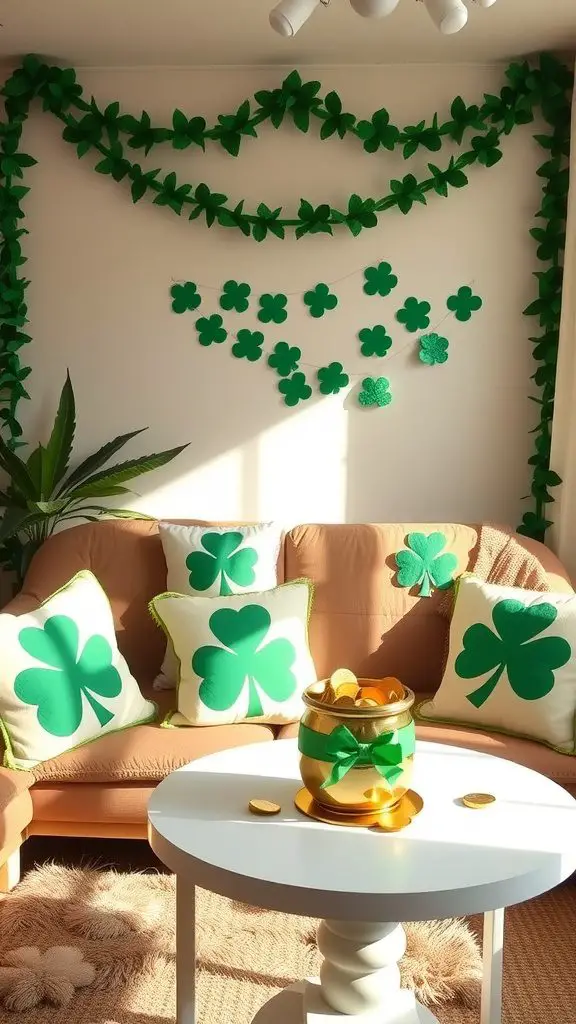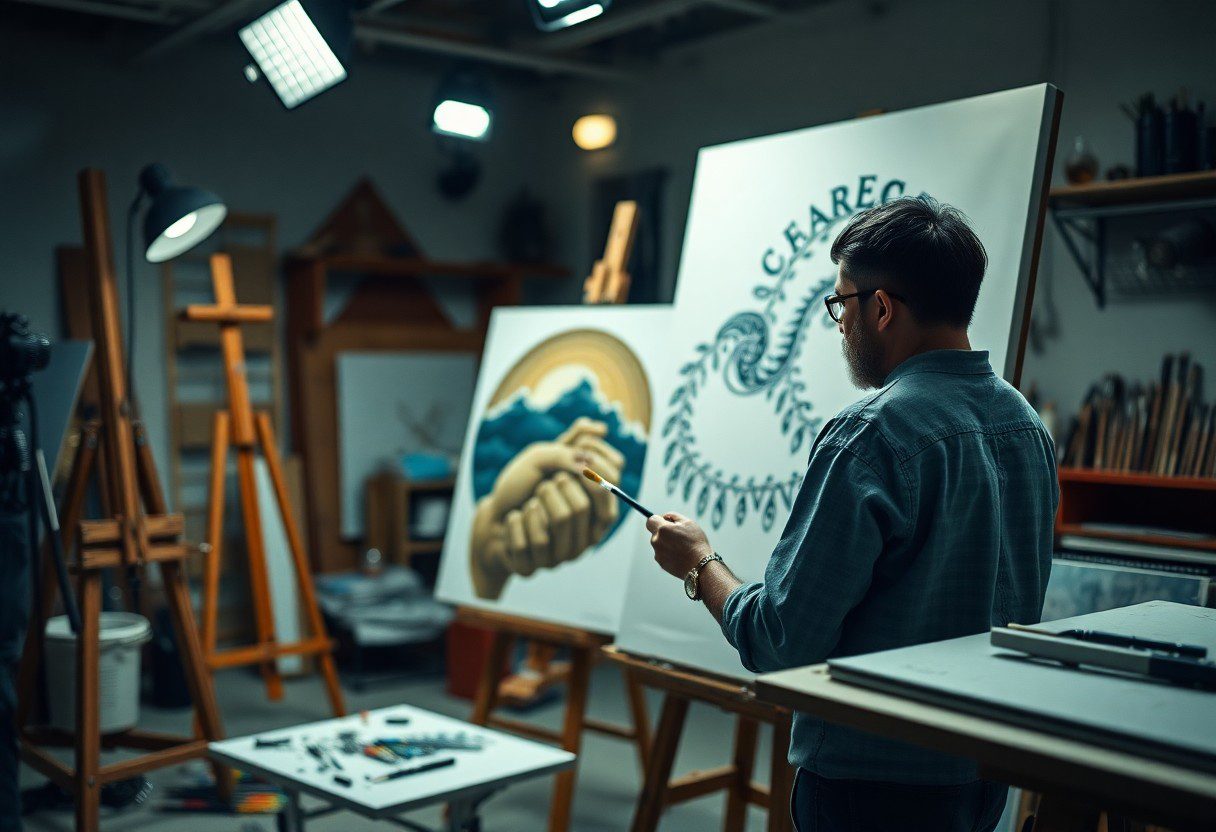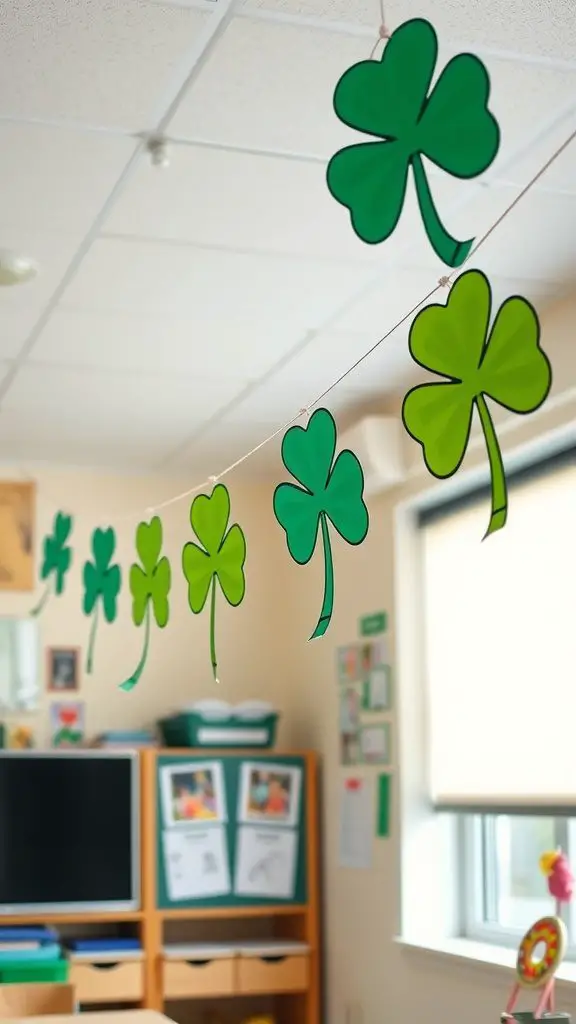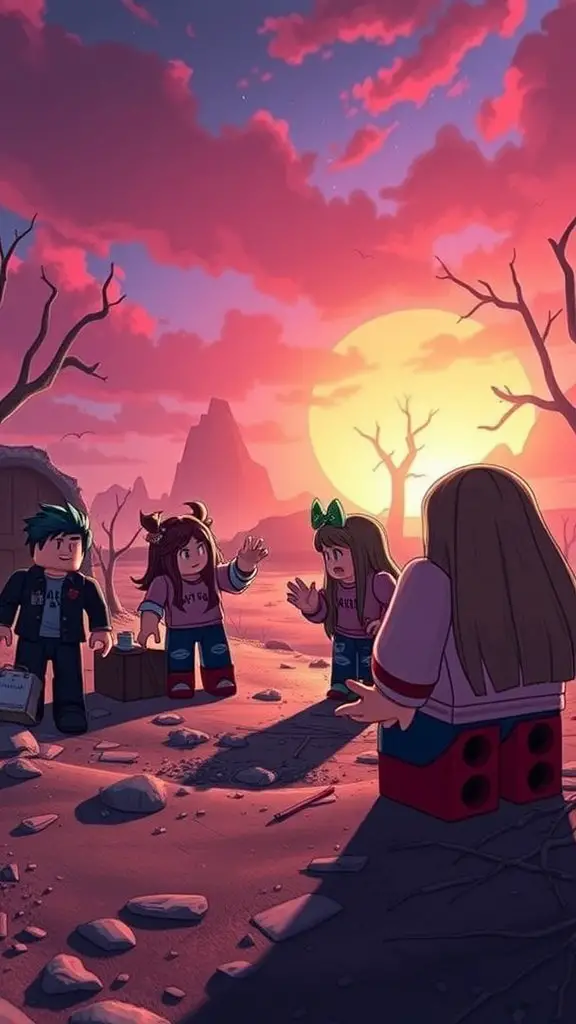With a passion for art and a desire to elevate your creative abilities, you have the opportunity to explore advanced techniques that can significantly enhance your work. Whether you’re dabbling in mixed media, mastering color theory, or experimenting with perspective, these skills will empower you to unlock your full potential. This post will guide you through necessary methods and tips, illustrating how you can refine your style and produce captivating pieces that resonate with your audience.
Understanding Color Theory
The mastery of color theory is important for elevating your artistic skills, allowing you to make informed choices that enhance your work. By recognizing how colors interact and influence your creations, you can manipulate emotions, create depth, and set the mood in your art. This knowledge serves as a fundamental building block for any advanced artist who seeks to captivate their audience with the power of color.
Color Wheel Essentials
Color wheels are foundational tools in mastering color theory. They illustrate the primary colors—red, blue, and yellow—along with their combinations to create secondary colors. Familiarizing yourself with the relationships between these colors helps you pick harmonious palettes and develop a deeper understanding of shade, tint, and tone, ultimately enhancing your artwork’s overall impact.
Emotional Impact of Colors
Essentials of color psychology reveal that colors can evoke a wide range of emotions in viewers. Different hues carry meanings: vibrant reds can indicate passion or danger, while calming blues evoke tranquility and trust. By utilizing this understanding, you can choose colors strategically to align your art with the intended emotional response, creating a powerful connection with your audience.
Due to their psychological effects, the colors you choose can strongly influence how your work is perceived. For instance, using warm colors like yellows and oranges can evoke feelings of happiness and energy, while cool colors such as blues and greens can create a sense of calm or serenity. It’s important to consider the cultural significance of colors, as these associations may vary across different communities. By understanding and applying these concepts, you can enhance the emotional resonance of your art and create more meaningful experiences for your viewers.
Mastering Composition
Now it’s time to elevate your artwork by mastering composition. A strong composition can transform your piece, making it not only visually appealing but also emotionally engaging. By understanding and applying various compositional techniques, you can enhance your storytelling abilities through your art, guiding the viewer’s eye and conveying your intended message with clarity and impact.
Rule of Thirds
Below is a fundamental principle that can dramatically improve your compositions: the Rule of Thirds. This technique involves dividing your canvas into a 3×3 grid and positioning key elements along the grid lines or at their intersections. By doing so, you create a more balanced and dynamic image that draws the viewer’s attention to your focal points instead of placing everything at the center, resulting in a more engaging composition.
Leading Lines and Balance
At the heart of a compelling composition lies the concept of leading lines and balance. These elements direct the viewer’s gaze toward the focal point of your artwork, ensuring a smooth visual journey. By incorporating lines that lead the eye through the piece, you can create a sense of movement and depth, enhancing the overall experience of the viewer.
For instance, when you incorporate leading lines, such as roads, rivers, or architectural features, they guide the viewer’s gaze towards the focal point. This technique adds a sense of depth and dimension to your artwork. Balance is equally important; achieving it means distributing visual weight across your composition to prevent any areas from feeling too heavy or disjointed. By employing these techniques, you ensure that your artwork not only captures attention but also maintains harmony and cohesion, creating a powerful visual experience for your audience.
Advanced Drawing Techniques
Some techniques can elevate your drawing skills and broaden your artistic horizons. Mastering advanced drawing methods involves focusing on the finer details and incorporating complex elements. Consider the following:
| Technique | Description |
|---|---|
| Cross-Hatching | A technique that uses intersecting lines to create depth and shading. |
| Foreshortening | Creating an illusion of an object receding strongly into the background. |
| Conté Crayon Techniques | Using conté crayons for rich texture and dramatic contrast. |
Gesture Drawing for Dynamic Poses
Along with mastering basic techniques, engaging in gesture drawing enables you to capture the essence of movement and emotion. This swift and fluid approach reinforces your ability to depict dynamic poses, fostering a deeper connection with your subjects and enhancing your overall drawing skills.
Using References Effectively
Below are important tips for utilizing references to maximize your artistic practice. Utilizing references allows you to gain a better understanding of anatomy, perspective, and composition.
Using references can significantly enhance your artwork, as they provide you with a benchmark for accuracy and creativity. Draw on a variety of sources like photographs, real-life observations, or other artworks to ensure you’re exposed to diverse styles and techniques. Be cautious about over-relying on references, which can limit your creativity; instead, use them as a foundation to build upon. Your goal is to integrate what you learn from references into your unique style, ultimately boosting your confidence in creating original pieces.
Exploring Different Mediums
Unlike traditional methods, exploring various mediums allows you to expand your creative horizons and discover new dimensions to your artistry. Each medium offers unique properties and challenges, encouraging you to adapt and develop your skills. By embracing a diverse range of materials, you can infuse your work with fresh perspectives and innovative techniques that elevate your artistic expression.
Watercolor vs. Acrylics
Behind the allure of watercolor and acrylics, lies a fundamental difference in how they interact with your canvas. Watercolors provide a translucent and fluid quality, allowing for delicate layering and soft effects, while acrylics offer vibrant colors and a fast-drying, versatile nature that supports bold techniques. Depending on your desired outcome, you can choose the medium that best aligns with your artistic vision.
Mixed Media Approaches
Below the surface of traditional painting lies a world of mixed media that rejuvenates your creative process by combining textures and techniques. By layering different materials and mediums, you can create compelling artworks that resonate with depth and complexity. This approach not only broadens your skill set but also encourages you to experiment freely, ultimately leading to unique artistic expressions.
With mixed media, you have the exciting opportunity to combine elements like collage, paint, ink, and pastels, which can yield remarkable results. This approach allows you to harness the strengths of various materials, creating texture and depth that one medium alone might not achieve. Blend traditional techniques with unexpected elements to produce dynamic compositions that reflect your personal style. Don’t hesitate to explore and push the limits of your creativity—your art is a journey of discovery and innovation!
Developing Your Unique Style
For artists striving to refine their craft, developing a unique style sets you apart in a saturated industry. By embracing your individuality, you not only express your personal vision but also engage your audience on a deeper level. This journey involves blending your influences with your own creative insights, allowing you to create work that is distinctly yours. Embrace the process of exploration and evolution in order to establish a signature that speaks to who you are as an artist.
Influences and Inspiration
Any great artist draws inspiration from various sources, including nature, culture, and contemporary trends. By identifying your influences, you can begin to infuse these elements into your work in a way that feels authentic and personal. Don’t shy away from studying the techniques of artists you admire; instead, focus on how they can inspire your own unique approach and voice.
Experimentation and Risk-Taking
Between honing your skills and cultivating your artistic voice lies the art of experimentation. Stepping outside your comfort zone allows you to discover new techniques and ideas that can lead to breakthroughs in your work.
But venturing into unfamiliar territory is where real artistic growth occurs. By taking risks, you challenge yourself to step beyond conventional boundaries and explore new materials, techniques, or subject matter. This process may lead to unexpected results that you would not have achieved otherwise. While it can feel intimidating to push limits, keep in mind that every successful artist has faced uncertainty and embraced it as a vital part of their journey. Let your willingness to take risks transform your creative practice and foster your unique style.
Critiquing Your Work
To elevate your artistic skills, you must develop the habit of critiquing your work. This practice not only helps you identify areas for improvement but also encourages a deeper understanding of your creative process. By examining your pieces critically, you can discover what resonates with your vision and what might need reconsideration. Embrace this practice as a vital tool for your artistic growth.
Self-Critique Techniques
An effective way to start critiquing is through self-reflection techniques. Spend time analyzing your artwork by asking yourself specific questions, such as what elements work well, what doesn’t, and how you can improve. Consider keeping a journal of your thoughts and observations to track your progress over time. This ongoing dialogue with yourself fosters a deeper connection to your artistic voice and vision.
Seeking External Feedback
With external feedback, you can gain fresh perspectives on your work. Engaging with fellow artists or mentors can provide insights you may have overlooked.
A diverse range of external opinions can highlight both strengths and weaknesses in your artwork. By sharing your pieces with trusted peers or joining an art community, you create opportunities for constructive criticism that can sharpen your skills. Keep in mind that while positive feedback boosts your confidence, negative critiques should be viewed as valuable lessons. Approach this feedback with an open mind, and be ready to adapt and grow, allowing you to enhance your artistry significantly.
To wrap up
On the whole, advancing your art techniques requires dedication and a willingness to experiment beyond your comfort zone. By exploring new mediums, refining your skills through practice, and embracing constructive feedback, you can elevate your artistic expression and create compelling works. It’s vital to stay curious and open-minded, allowing you to discover innovative approaches that resonate with your unique style. With consistent effort and a passion for growth, you can truly take your artistic abilities to the next level.
FAQ
Q: What are some advanced art techniques I can learn to enhance my skills?
A: There are several advanced techniques you can explore, such as chiaroscuro for dramatic lighting, glazing for depth in painting, texture creation through mixed media, and layering for complex compositions. Additionally, studying perspective and anatomy can greatly improve realism in your work. Experimenting with dynamic brushwork and incorporating digital tools can also elevate your techniques.
Q: How can I develop my unique artistic style while using advanced techniques?
A: Developing your unique artistic style involves experimentation and self-discovery. Start by mastering advanced techniques and then gradually incorporate elements that resonate with you. Analyze the work of artists you admire, and combine aspects of their styles with your techniques. Keep creating diverse pieces and seek feedback to refine your voice and expressiveness in art.
Q: Are there specific materials or tools recommended for mastering advanced techniques?
A: Yes, investing in high-quality materials can significantly impact your work. For painting, consider using professional-grade paints, an array of brushes, palette knives, and various surfaces like canvas, wood panels, or paper suitable for mixed media. For drawing, high-quality pencils, charcoal, pastels, and specialty papers can enhance your results. Digital platforms, such as drawing tablets and software like Adobe Photoshop or Procreate, can expand your creative possibilities as well.
Q: How can I find mentorship or guidance while learning these advanced techniques?
A: You can find mentorship through local art schools, workshops, or online platforms that connect artists. Many professional artists offer virtual classes or tutorials, which can be beneficial for personalized feedback. Joining art communities on social media or local art groups can also provide networking opportunities, access to resources, and the chance to learn from more experienced artists.
Q: What role does critique play in advancing my art skills?
A: Constructive critique is vital for growth in your artistic journey. It provides external perspectives on your work, highlighting strengths and areas for improvement. Engaging with peers, instructors, or online forums can help you receive valuable feedback that can refine your techniques and encourage new ideas. Be open to different viewpoints and use the feedback to inform your future creations.





